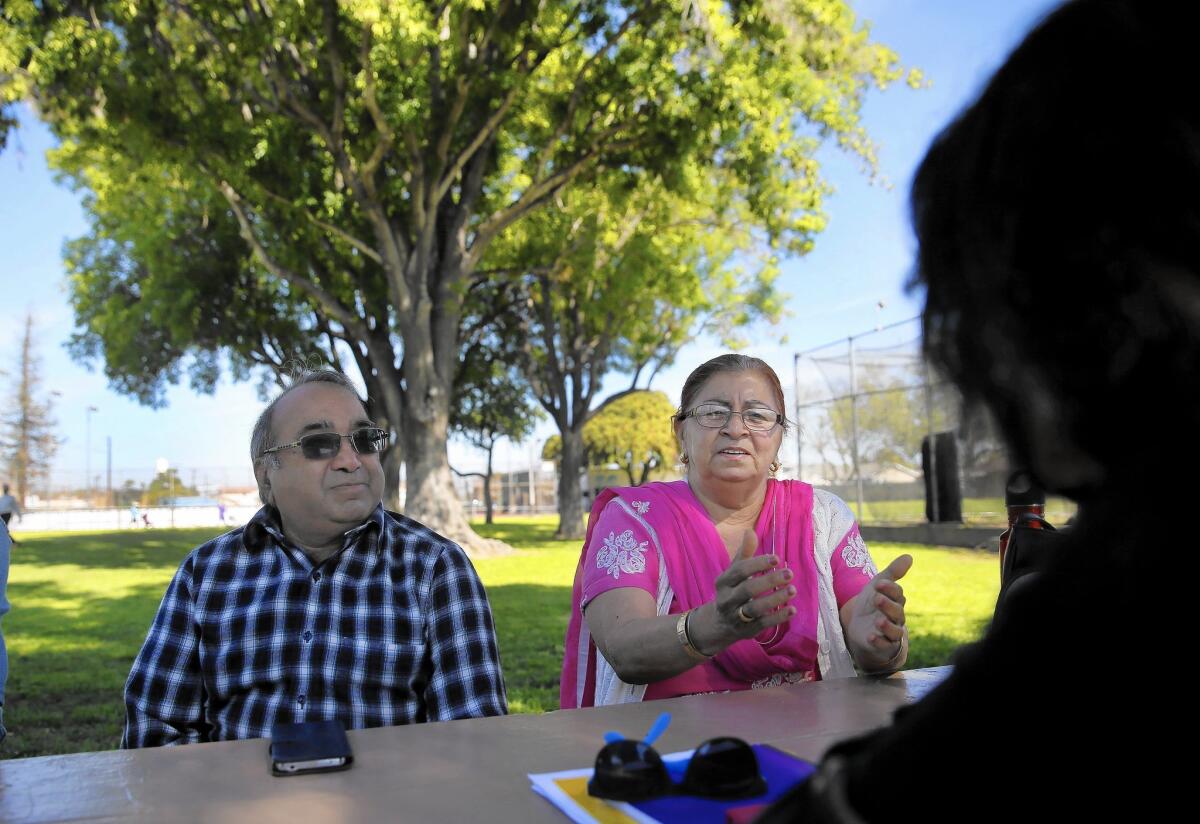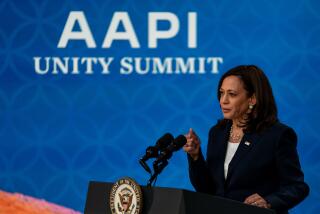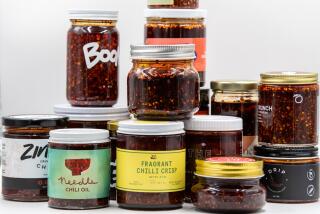Doctorsâ message to Asian Americans: Watch out for diabetes even if youâre young and thin

South Asian seniors Dinesh Shah, left, and Sital Kaur learn about eating healthier at the Oliver Little Community Center in Artesia. Asian Americans are at higher risk of diabetes than other people.
The patients filing into Dr. Ronesh Sinhaâs clinic in Redwood City, Calif., were like nothing he had ever seen.
As a doctor in training, Sinha studied which patients were usually diagnosed with Type 2 diabetes: they were at least middle-aged, ate too much fast food, drank soda and didnât exercise.
The Silicon Valley techies visiting his office were typically slender Asian Americans in their 30s who worked out regularly and ate healthy meals. But, as Sinha repeatedly found, they either already had or were about to get diabetes.
âIt was such a discordance from what Iâd learned about in medical school,â Sinha said. âMaybe, I thought, this is just an anomaly.â
It wasnât. What Sinha noticed a decade ago is now supported by a growing body of scientific research: Asians, in part for genetic reasons, are disproportionately likely to develop diabetes. They get the disease at younger ages and lower weights than others, experts say.
Diabetes, a condition in which blood sugar levels are higher than normal, often remains undiagnosed until itâs too late, especially in Asians who havenât historically been considered high-risk. Itâs the seventh most common cause of death nationwide and can lead to blindness, amputations and strokes.
To prevent the insidious disease from gaining ground among the countryâs fastest-growing minority group, doctors and health advocates are trying to increase diabetes testing and treatment for Asian Americans, including Chinese, Indians and Filipinos. Diabetes is largely preventable, experts say â but only if people know they are at risk.
âWe began with diabetes is not a big problem in the Asian communityâ to now thinking âsimply being Asian is a risk factor,â said Dr. Edward Chow, an internist who has worked in San Franciscoâs Chinatown since the 1970s.
As Americans put on weight over the last two decades, diabetes rates more than doubled. Scientists have long known that obesity is closely linked to diabetes, but newer research shows the picture is more complicated.
See more of our top stories on Facebook >>
In Los Angeles County, Asian American adults have the lowest obesity rate of any ethnic group, at 9%, compared with 18% of whites and 29% of Latinos and blacks.
âYou would think ⌠Asians would have the lowest diabetes rate,â said Dr. Paul Simon, chief science officer with the L.A. County Department of Public Health.
But 10% of Asian Americans in L.A. County are diabetic, compared with 7% of whites, despite Asian Americansâ drastically lower obesity levels.
Scientists think the mismatch is because obesity is a measure of weight, not necessarily fat â the real culprit in diabetes.
Asians tend to have less muscle and more fat than Europeans of the same weight and height, studies show. So an Asian who isnât obese or even overweight could have enough fat to be in danger of getting diabetes, a phenomenon sometimes referred to as âskinny-fat.â
âWeâve got to be suspicious even if somebody looks normal,â Chow said.
Asians also tend to accumulate more fat around their waists than people of other ethnicities, and abdominal fat is a bigger risk factor for diabetes than fat stored in other places, such as hips or arms.
Alan Owyang, 58, found out he was diabetic 15 years ago, when he was barely overweight.
âI had a little, a very slight gut, but I just thought it was OK,â said Owyang, an actor in San Francisco. Heâs shed some pounds and changed his diet, but still has to take medications to keep the disease under control.
NEWSLETTER: Get the dayâs top headlines from Times Editor Davan Maharaj >>
In October, San Francisco, which is 35% Asian, passed a resolution expanding diabetes testing to Asian Americans who arenât considered overweight.
It was a victory for âScreen at 23,â a national campaign that aims to lower the diabetes screening guidelines from the current standard of a body-mass index of 25 â the traditional cutoff for being overweight â to 23 for Asian Americans. The effort was launched last year by the National Council of Asian Pacific Islander Physicians and a coalition of diabetes advocates.
Simon in L.A. County â which, like California, is approximately 15% Asian â said he was looking into a similar change, and the American Diabetes Assn. and the World Health Organization have also endorsed lower screening thresholds.
But identifying those at risk is just the beginning of the battle against diabetes, said Scott Chan, program director of the L.A.-based Asian and Pacific Islander Obesity Prevention Alliance. He said that many Asian Americans are reluctant to believe that they could get diabetes, in part because of what he called a long-standing âmodel minorityâ myth when it comes to health.
âYouâre skinny, youâre healthy, thereâs nothing wrong,â he said.
When physicians tell patients to eat less rice to prevent developing diabetes, many of them say âthey would rather die,â Chan said.
Wendy Kim, 45, had to give up bagels and sushi with white rice after being diagnosed with diabetes more than 10 years ago. Even if she skips the rice that comes with Korean barbecue, the meat marinades contain sugar that she canât gorge on.
âThere are people who eat to live and there are people who live to eat. I live to eat,â says Kim, who lives in L.A.âs Koreatown. âIâm a foodie, and I canât have noodles.â
Studies have shown that more than medication, dieting and exercising greatly reduce peopleâs chances of getting diabetes. But making those lifestyle changes can be especially difficult for Asian Americans, because healthy eating guidelines have typically been based on traditional American diets.
The dietitian to whom Pratap Merchant of Artesia was referred after he was diagnosed with diabetes couldnât help him much. âShe had very little knowledge of vegetarian foods,â said Merchant, 82, who was raised in India as a vegetarian.
Sinha, the Bay Area doctor, has spent the last several years trying to solve this problem. After diagnosing dozens of Asian Americans with diabetes, he realized he didnât have appropriate dietary suggestions to help them manage the disease. Telling vegetarians to eat less red meat, for example, wasnât going to work, he said.
Through Sutter Healthâs Palo Alto Medical Foundation, Sinha launched a consult service in 2011 specifically for South Asians, who have some of the highest diabetes rates among Asians.
Its doctors recommend food modifications such as doubling the amount of vegetables in a curry dish, or switching from white rice to a dish made of cauliflower florets.
Manjusha Kulkarni, head of the nonprofit South Asian Network in Artesiaâs Little India, also runs food workshops for diabetics and started a walking group to help Asian American seniors improve their health. But, she said, the first line of defense against diabetes is raising awareness.
She and her colleagues travel from Irvine to Westwood, visiting temples and cultural festivals, warning Asian Americans that when it comes to diabetes, âwe need to be more vigilant than other communities.â
Twitter: @skarlamangla
MORE FROM HEALTH
Youâll burn 30% more calories with this sweaty, sandy L.A. workout
Youâre taking care of someone with Alzheimerâs, but who is taking care of you?
Coffee lovers rejoice: 4 reasons why coffee is good for your health







